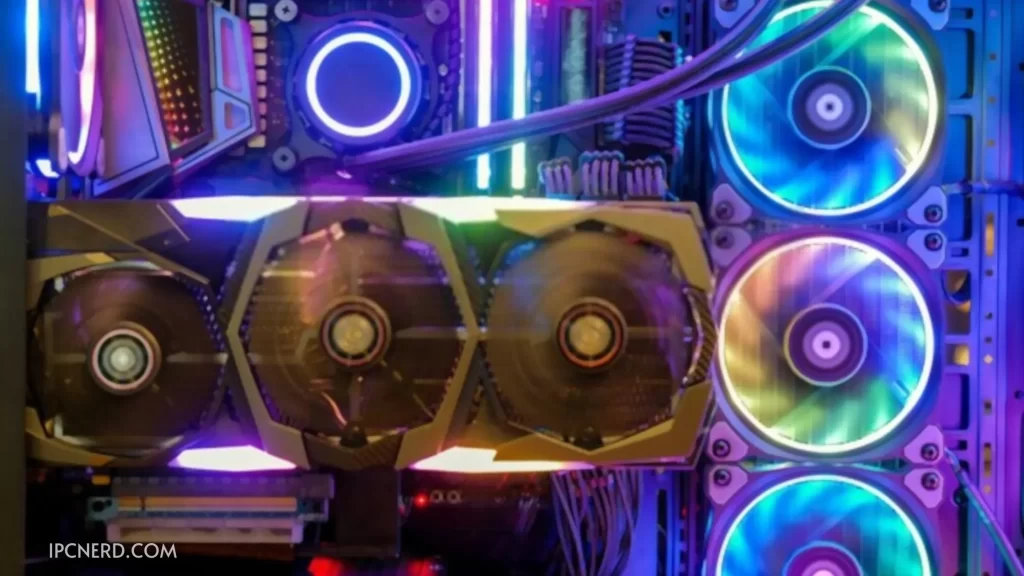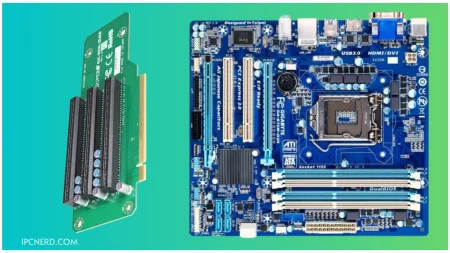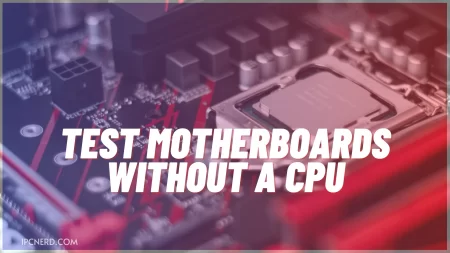Case fans and CPU coolers are important for keeping your computer running at a cool temperature. With the right setup, they can significantly lower the amount of heat your computer generates. This article will teach you how to control your case fan speed depending on what you need it for.
- Why should you control the speed of your case fans?
- How do you control the speed of your case fan?
- How to control case fan speed
- How to measure your computer’s case fan noise
- What is the best way to control my case fan speed?
- When Should You Adjust Your Fan Speed?
- How to Test the Correct Fan Speed Setting
- Frequently Asked Questions
- Conclusion
Why should you control the speed of your case fans?

If you want your computer to run cooler and quieter, you should control the speed of your case fans. By controlling the speed of the fans, you can adjust how much airflow goes through your case, which directly affects how cool your components run.
There are a few different ways to control fan speed. The most common method is to use the motherboard’s BIOS.
In the BIOS, there is usually a section called “Fan Control” or something similar. In this section, you can set the speed of each fan header on your motherboard.
Another way to control fan speed is with hardware Fan Controllers. These devices typically have knobs or switches that let you manually set the speed of each connected fan.
Some Fan Controllers also have additional features like temperature monitoring and alarms.
The last way to control fan speed is with software. Several different programs can be used to monitor and control your fans. SpeedFan is one of the most popular programs because it’s free and works with many motherboards and Fans.
How do you control the speed of your case fan?
There are a few different ways to control your case fan’s speed. The most common way is through your computer’s BIOS settings. You can also use a fan controller if your motherboard has no built-in fan control.
The first thing you need to do is figure out what kind of fan control your motherboard has. If it has 4-pin connectors, then it likely has software fan control. If it only has 3-pin connectors, you’re probably limited to the hardware fan control.
Software fan control gives you the most flexibility when controlling your fans. You can usually set a specific RPM for each fan header. This is great if you want to fine-tune the noise level of your PC.
Hardware fan control is more limited, but it’s still better than nothing. You can usually set a low, medium, and high speed for each header. This is helpful if you want to quickly change the speed of all your fans without having to enter the BIOS every time.
To change the speed of your fans in the BIOS, look for the “Fan Speed Control” or “Fan Settings” section. From here, you should be able to set a specific RPM for each header.
Remember that not all motherboards will have this feature – some only allow you to enable or disable automatic fan control.
You can use a fan controller if your motherboard doesn’t have fan control. These devices usually connect to one of your 4-pin fan headers and give you manual control over the speed of all the fans connected to it.
Most fan controllers will have a physical knob that you can turn to adjust the speed. Some higher-end models might have an LCD or even allow you to control the fans through software.
No matter what method you use to control your fans, make sure not to set them too low. If the fans get too slow, they might be unable to cool your components effectively, which could cause your PC to overheat.
How to control case fan speed
You can do a few things if you want greater control over your case fan speed. First, check to see if your motherboard has fan headers that support PWM fans. If so, you can plug your case fans into those headers and use the BIOS or a fan controller to adjust the speed.
Another option is to purchase a fan controller. You can install this device in your 5.25″ drive bay to control the speed of your case fans. There are both physical and software-based controllers available.
Lastly, some power supplies come with built-in fan controllers. If yours does, you can usually find the switches on the back of the unit near where the cables connect.
By taking some time to understand how to control case fan speed, you can ensure that your system stays cool and runs quietly.
How to measure your computer’s case fan noise
To measure your computer’s case fan noise, you will need to purchase a sound level meter. Once you have your sound level meter, follow these steps:
- Turn off all fans in your computer case.
- Place the sound level meter close to the fan you want to measure.
- Turn on the fan and take a reading from the sound level meter.
- Repeat steps 2-3 for each fan in your computer case.
What is the best way to control my case fan speed?
You can control your case fan speed in a few different ways. The most common way is to use a fan controller. A fan controller is a device that sits in between your power supply and your fans. It has a knob or a switch that allows you to control the speed of the fans.
Another way to control your case fan speed is to use the motherboard headers. Most motherboards have at least one 4-pin header that can be used to connect a fan.
These headers usually have three settings: high, low, and off. You can use these headers to control the speed of your fans based on how much airflow you need.
Using the software is the last way to control your case fan speed. There are a few different software packages out there that allow you to monitor and control your fans. Some of these software packages are free, while others will cost you a few dollars.
When Should You Adjust Your Fan Speed?
The answer to this question depends on a few factors, including the make and model of your computer case and fans and the ambient temperature of your room.
You should adjust your fan speed when your computer is hotter than usual or if you’re using it for demanding tasks requiring extra cooling.
If you have a fan controller built into your computer case, it will likely have a few different settings that you can choose from.
For example, some controllers will let you set your fans to run at a low, medium or high speed. Others may give you even more control, with separate dials or switches for each fan so you can adjust them individually.
To figure out the best fan speed for your needs, it’s important to keep an eye on both the temperature of your CPU and the overall temperature inside your case.
A good rule of thumb is to keep things around 35 degrees Celsius (95 degrees Fahrenheit) or below. If things get too hot, you can always turn up the fan speed until things cool down again.
How to Test the Correct Fan Speed Setting
There are several ways to test the correct fan speed setting for your case fans. The best way to do this is to use a fan controller. This will allow you to set the speed of the fans and then test them to see how well they cool your system.
Another way to test the correct fan speed setting is to use a program like SpeedFan. This program will allow you to monitor the temperatures of your system and adjust the fan speeds accordingly.
Lastly, you can always just trial and error until you find the perfect balance of cooling and noise for your needs.
Frequently Asked Questions
How do I control case fan speed?
You can use various methods to control case fan speed. The most common method is to use a fan controller, which is usually included with your case or can be purchased separately. Another method is to adjust the settings in your BIOS. And lastly, you can also use software to control case fan speed.
Is it bad to have too many case fans?
No, having too many case fans is not bad. The more case fans you have, the better cooling your system will have. However, you must ensure that your case can accommodate all the fans you want to install. Otherwise, you may run into some clearance issues.
Do I need a fan controller?
You don’t necessarily need a fan controller, but it can be a helpful addition to your system. A fan controller gives you more control over your case fans and allows you to fine-tune the speed of each fan.
Conclusion
We hope this article has helped you understand how to control case fan speed. Whether you want to keep your fan speed low to reduce noise or increase it for better cooling, the important thing is that you now know how to do it.
Take advantage of this knowledge to keep your computer running at its best.







